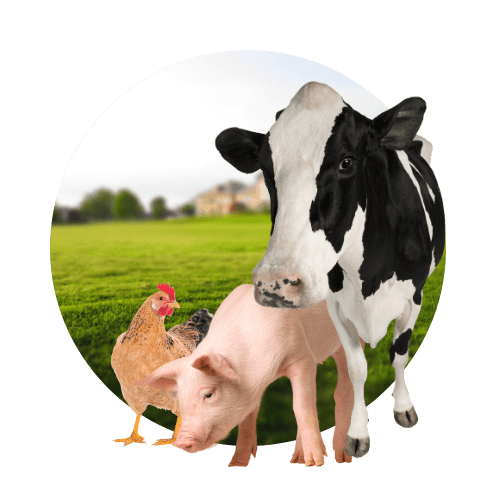In the vast landscape of the animal industry, certain species often remain obscured from the limelight despite their significant contributions. Among these overlooked creatures are ostriches, the towering avians known for their remarkable speed and unique appearance. While ostriches are traditionally associated with the African savannas, they have also found a place in the leather and meat industries worldwide. However, their role in these sectors often goes unnoticed, leading to a curious case of the forgotten giants.
Ostriches – the oldest living bird on earth
The evolutionary journey of ostriches is a testament to their resilience and adaptability. Belonging to the family Struthionidae, these flightless birds are native to the expansive savannas and deserts of Africa. Their ancient origins can be traced to the early Cenozoic era, with fossil evidence suggesting that ostrich-like birds existed as far back as the Late Paleocene epoch, approximately 56 million years ago.
Through the ages, ostriches have weathered the tides of environmental change and natural selection, evolving unique anatomical and behavioral adaptations that have allowed them to thrive in diverse habitats. Their distinctive features, including their long necks, keen eyesight, and powerful legs, are finely honed tools for survival in the harsh and unpredictable landscapes they call home.
One of the most striking characteristics of ostriches is their inability to fly, a trait that sets them apart from most other bird species. Instead of taking to the skies, ostriches have become masters of terrestrial locomotion, capable of reaching speeds of up to 70 kilometers per hour (43 miles per hour) in short bursts. This remarkable agility and speed serve as crucial defenses against predators, allowing ostriches to evade threats and safeguard their territories.
Furthermore, ostriches are renowned for their role as caretakers of their ecosystems. As omnivorous scavengers, they play a vital role in maintaining ecological balance by consuming a wide variety of plant matter, insects, and small vertebrates. In doing so, they help regulate plant growth, control insect populations, and recycle nutrients, contributing to the overall health and vitality of their habitats.
Beyond their ecological significance, ostriches hold cultural and symbolic importance in many societies around the world. From ancient civilizations to modern-day cultures, these majestic birds have inspired myths, legends, and artistic representations, serving as symbols of strength, freedom, and resilience.
How ostriches are farmed
The ostrich farming industry has a complex and varied history, marked by shifts in focus and challenges. Originating in the 1860s primarily in the Cape Colony of South Africa, ostrich farming initially centered around meeting the demands of European fashion for feathers. This endeavor proved highly profitable, with ostrich feathers ranking fourth in South Africa’s export sales at the time. However, the industry faced a sudden collapse in 1914 with the outbreak of World War I, leading to significant economic upheaval.
In recent decades, ostrich farming has experienced a resurgence, particularly in Africa, with individuals like Mamadou Coulibaly in Malia spearheading large-scale operations. This revival has been fueled by a shift in focus from feathers to meat and skin for leather fashion items. Countries such as Britain, the USA, Australia, and Continental Europe have also joined the ostrich farming endeavor, attracted by the economic prospects offered by ostrich meat and leather.
However, despite the renewed interest in ostrich farming, the industry faces significant challenges. Ostrich chicks, in particular, are highly susceptible to disease, with an alarmingly high mortality rate of 67 percent, far exceeding that of other farmed animals. This vulnerability poses a considerable obstacle to the sustainable growth of ostrich farming operations.
Moreover, the conditions in which ostriches are kept on farms raise ethical concerns. Confined to small paddocks or pens alongside dozens of other birds, ostriches are deprived of the freedom to roam and run as they would in their natural habitat. Especially during the winter months, these birds may be confined to even smaller spaces, leading to stress and health issues.
The welfare of ostriches on farms is a matter of increasing importance, prompting calls for improved farming practices and greater consideration for the needs of these animals. Efforts to address disease susceptibility and mortality rates, as well as to provide more spacious and humane living conditions, are essential for the long-term sustainability and ethical integrity of the ostrich farming industry.
In conclusion, while ostrich farming has undergone significant evolution and expansion over the years, it continues to face challenges related to disease management, animal welfare, and ethical considerations. By addressing these challenges and adopting more sustainable and compassionate farming practices, the ostrich farming industry can strive towards a future that is both economically viable and ethically responsible.

Challenges of Abnormal Behavior in Ostrich Farming
Abnormal behavior in ostrich farming is a concerning issue that highlights the challenges of maintaining the welfare of these birds in captive environments. One significant manifestation of abnormal behavior in ostriches is feather picking, where birds aggressively peck feathers from each other’s backs. This behavior is directly linked to stress and boredom, particularly exacerbated during the confinement of winter months.
Another distressing behavior observed in housed ostriches is stargazing, where birds lift their heads up and back until it touches their spines. This posture can lead to difficulties in walking, eating, and drinking, ultimately resulting from inadequate space and lighting in their enclosures. The cure for these behaviors is as simple as allowing the birds access to outdoor environments, yet the trend towards intensive confinement in ostrich farming presents obstacles to implementing such solutions.
Toe and face pecking represent additional abnormal behaviors not observed in the wild ostrich population. This behavior can lead to severe injuries, including the pecking out of entire eyelids, particularly affecting young chicks. While the exact causes of these behaviors remain unknown, stress and boredom are believed to be contributing factors, underscoring the importance of addressing environmental and management practices in ostrich farming.
Fly catching is yet another stereotypic behavior observed exclusively in captive ostriches. This behavior involves birds repeatedly attempting to catch imaginary flies, indicating distress or discomfort. Once again, stress or pain is identified as the underlying cause, highlighting the need for comprehensive measures to improve the welfare of ostriches in captive environments.
Addressing abnormal behaviors in ostrich farming requires a multi-faceted approach that prioritizes the mental and physical well-being of these birds. Providing adequate space, enrichment, and environmental stimulation are essential steps in preventing and mitigating abnormal behaviors. Furthermore, promoting practices that prioritize animal welfare over intensive confinement is crucial for ensuring the long-term sustainability and ethical integrity of the ostrich farming industry.
Addressing Challenges in Ostrich Transport: Welfare Concerns
Transporting ostriches presents a myriad of challenges that parallel those encountered in farming practices. However, the welfare considerations during handling and transport are often overlooked, leading to potential risks for both the birds and handlers involved. The lack of scientific guidance and established best practices exacerbates these issues, leaving handlers and birds alike ill-prepared for the rigors of transportation.
One significant concern is the disregard for ostriches’ natural social boundaries, behaviors, and physical conditions when mixing them together during handling and transport. This oversight can lead to increased stress and aggression among the birds, resulting in injuries or even fatalities. Additionally, the withdrawal of water and feed before transport, a common practice in some regions, lacks standardized guidance and may further compromise the welfare of the birds.
The absence of specific vehicle designs for transporting ostriches adds another layer of complexity to the process. Standard transportation vehicles may not adequately accommodate the unique size and needs of these large birds, increasing the risk of overcrowding and injuries during transit. Moreover, long transportation times and overcrowding exacerbate the stress and discomfort experienced by the birds, potentially leading to adverse health outcomes.
Ostrich Slaughter
Ostriches are typically slaughtered at the age of eight to nine months. However, the process of handling and slaughtering these birds poses significant risks, as highlighted by the Humane Slaughter Association. Ostriches possess a forward defensive kick that can easily disembowel handlers, underscoring the dangers involved in their handling.

In most cases, ostriches are killed in abattoirs using head-only electrical stunning, followed by bleeding. This process necessitates the assistance of at least four workers to restrain the bird during slaughter. An alternative suggested method involves killing the birds in a field using a captive bolt pistol, followed by pithing and bleeding. Attempts to use shotguns for slaughter have proven to be unsuccessful.
Disturbing reports of brutal handling and killing of ostriches have emerged from undercover investigations, particularly in South Africa. During transport, workers have been observed brutally kicking the birds’ heads, and upon arrival at slaughterhouses, the birds are roughly manhandled to restraining machines, causing distress and injury.
Some slaughterhouses employ leg-clamps to restrain highly distressed birds before subjecting them to head-only electrical stunning. While this method aims to render the birds unconscious, there remains a risk that a portion of them may be conscious during slaughter due to the inexperience of slaughterhouse workers, resulting in further suffering.
While retailers often tout ostrich meat as a healthy alternative to beef, recent findings challenge this notion. Contrary to popular belief, ostrich meat is not low in cholesterol, containing approximately 57mg per 100g, which is comparable to beef. Moreover, emerging research linking meat consumption to cancer suggests that ostrich meat may pose similar health risks as other red meats.
In addition to its cholesterol content, ostrich meat carries the potential to transmit various diseases to humans, including salmonella, E. coli, and campylobacteriosis. Furthermore, ostrich meat is prone to rapid decay, providing an ideal environment for bacterial growth. This fast deterioration increases the risk of bacterial contamination and poses additional health concerns for consumers.
While ostrich meat may offer some nutritional benefits, such as being leaner than traditional red meats, its cholesterol content and susceptibility to bacterial contamination raise questions about its suitability as a healthy alternative. Consumers should exercise caution and consider these factors when making dietary choices, especially in light of emerging health concerns associated with meat consumption.
















































